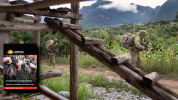Search
Using the filters to the left, click your selection, it will become bold and filter the results, click it again to remove that filter.
By Elliot Ackerman and Admiral James Stavridis Penguin Press , 2021, 303pp ISBN 9781984881267 - Paperback ISBN 9781984881250 - Hardcover ISBN 9781984881267 - Ebook ISBN 9780593394748 - Audio Reviewed by Dr Albert Palazzo In 1978, the retired British general Sir John Hackett published an account of a fictional war between the United States and the Soviet Union . Reading it is a distant memory for me, but at the time it formed a part of my foundation as a scholar of war. The Cold War was ongoing and …
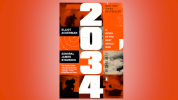
The 51st (Highland) Division during the First World War By Craig French Helion , Solihull, 2017, 300pp, Images : 4 maps & 26 tables 9781911096542 - Hardback Reviewed by BRIG Chris Roberts (Retd.) The 51st (Highland) Division earned a high and (from their German opponents) fearsome reputation. Its exploits during the Great War have been the subject of at least four previous histories, the latest being Colin Campbell’s The 51st (Highland ) Division in the Great War: Engine of Destruction , published in 2013, …
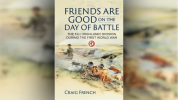
What it looks like Tactically, Operationally, and Strategically The author acknowledges the efforts, analysis, and assistance of Commander Jorge McKee and Lieutenant Colonel Uliano Polatos. Both officers significantly contributed to, and directly provided, the ideas and analysis that supports this article. History does not repeat itself, but it rhymes. Attributed to Mark Twain. [Australia’s] strategic culture values engagement with culturally compatible, like-minded worldwide powers, coalitions or …
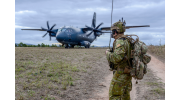
The content in this article is an extract of Spotlight Brief 7/21 . ResQBot 2.0: An improved Design of a Mobile Rescue Robot with an Inflatable Neck Securing Device for Safe Casualty Extraction Applied Sciences – Jun 2021 The authors of this study propose a novel design for a mobile rescue robot that can extract casualties from dangerous areas. They present ResQbot 2.0 – a stretcher-type robot capable of safely performing extraction through loco-manipulation that is synchronised with a conveyer belt and …
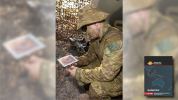
Explaining political precursors to violence in African civil conflicts. Introduction The Mozambique war of independence from Portugal has been regarded as one of Africa’s greatest stories of liberation to date. Scholars from around the globe have written about the conflict and subsequent civil war, exploring the complex factors within the narrative by applying theories of irregular warfare to better understand its drivers, events, and outcomes. Typically, researchers seek to fit a theory to a case study, …
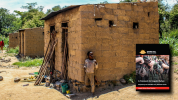
Adaptation and Innovation in the British Military, 1792 -1945 Series: Wolverhampton Military Studies #3 Editor: Michael LoCicero , Ross Mahoney , Stuart Mitchell Helion , 256pp, Images: 10 tables 9781911096702 - Paperback 9781909384460 - Hardback Reviewed by BRIG Chris Roberts (Retd.) Being another excellent publication in the Wolverhampton Military Studies series (University of Wolverhampton), A Military Transformed? offers valuable insights into the factors that enable or impede adaptation, …
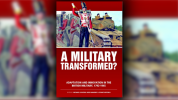
This article was originally published on 7th of October 2020. Our Unchecked Indo-Pacific Strategic Faultline Demanding greater strategic attention from Canberra is the future of the Antarctic, a frontier where Indo-Pacific contestation is rising. This is the second post in a two-part blog piece examining the strategic impact of inattention; Part 1 can be read from here . While the ATS explicitly bans militarization, incremental militarization is none the less underway in Antarctica. The grey-zone …
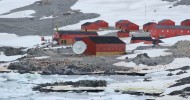
By Gwynne Dyer Black Inc , 2021, ISBN 9781760641696, 243pp Reviewed by Dr Albert Palazzo The eminent historian Michael Howard in his classic 1988 essay, “The Use and Abuse of Military History,” offered to the military profession his sage words on the education of its members. He advised soldiers to read military history in its width , depth and context so that the study of past wars can help them prepare for future wars. [1] Now along comes Gwynne Dyer and his notably brief book The Shortest History …
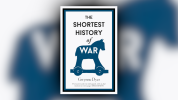
Clausewitzian friction and autonomous weapon systems Source: Comparative Strategy – Jan 21 Friction is a constant companion in the human activity of war. A lot of effort seeks to reduce this friction, with autonomous systems and weapons being amongst the latest solutions. It is a tempting argument: an autonomous system can be free of human frailty and errors, focusing on a single mission with relentless mechanical application. As with all solutions though, these systems bring in their own friction sources …
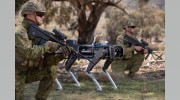
How Not To Do COIN The ongoing Malay-Muslim secessionist insurgency in Southern Thailand represents a cogent challenge to the legitimacy of the Thai state in the southern provinces of Yala, Narathiwat and Pattani, and adjoining districts of neighbouring Songkhla. Since re-igniting in the early 2000s, this conflict is far from abating. As the insurgency reaches its 17th year, Thai authorities are no closer to a solution than they were in the early stages of the conflict, with violence continuing at a slow …
